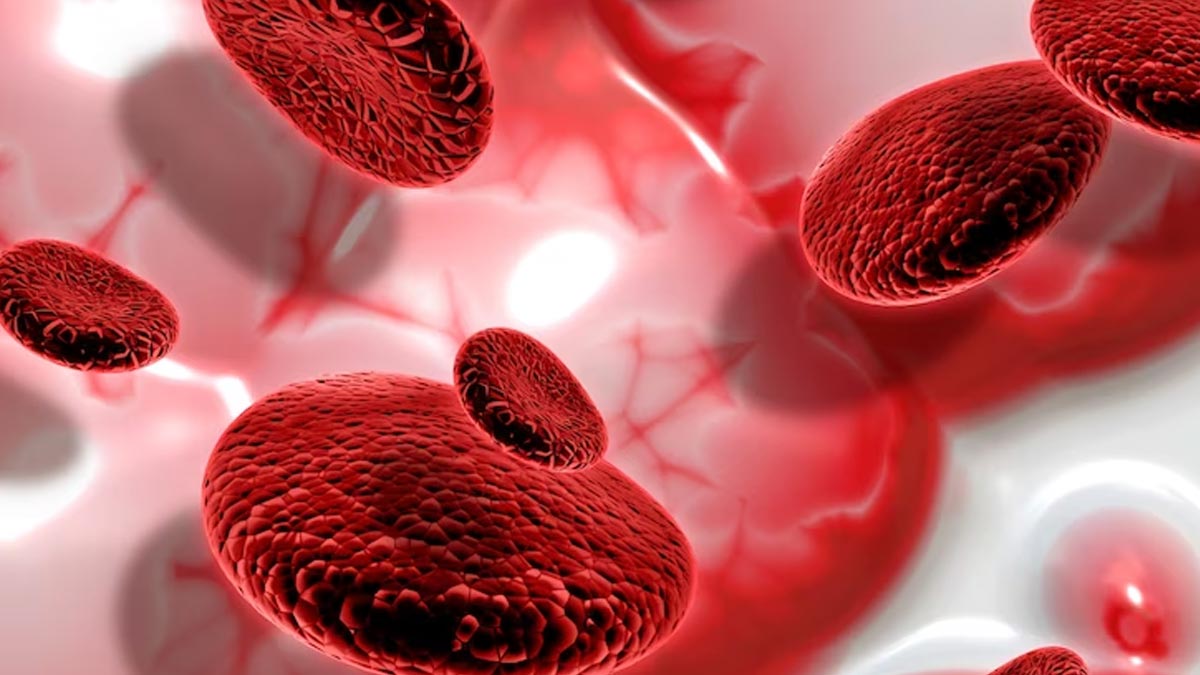
You must have heard platelet count decreasing in diseases like dengue or viral infections. But do you know what it is and its role in your overall health? These are small colourless cell fragments in the blood that help with blood clotting and prevent excessive bleeding. To understand more about it, we spoke to our expert Dr Mallikarjun Kalashetty, Consultant - Haematology, Haemato Oncology and Bone Marrow Transplantation, Manipal Hospital Old Airport Road, who shed light on the same.
Table of Content:-

Dr Kalashetty said, “Blood contains three formed elements namely Red Blood Cells (RBCs), platelets, and White Blood Cells (WBCs). Platelets, also known as thrombocytes, are produced in bone marrow and the process is very tightly regulated. They play an important role in achieving haemostasis and prevent excessive bleeding.”
He added, “Platelet production and regulation are also essential for maintaining vascular health. The balance between platelet production, circulation, and removal is critical for overall well-being.”
How Are Platelets Produced
Dr Kalashetty explained, “Hematopoietic stem cells, found in the bone marrow, differentiate into megakaryocytes. Megakaryocytes are large, multinucleated cells that reside in the bone marrow, and produce platelets by a unique process of fragmentation. Platelets produced in the marrow are released into the bloodstream.”
“A hormone known as thrombopoietin (TPO) controls the formation of platelets. TPO stimulates the maturation of megakaryocytes and increases platelet release. Also, the liver is the primary source of TPO production”, said Dr Kalashetty.
What Is The Normal Platelet Count
“Normal platelet count is 1,50,000-4,50,000/cumm. Low platelet count is known as thrombocytopenia, and it can lead to bleeding symptoms if platelet count drops below 20 to 30 000 /cumm”, said Dr Kalashetty.
Also Read: Platelet Deficiency: Symptoms And Causes To Prevent Adversity
What Is Thrombocytopenia

“Thrombocytopenia is a medical condition characterised by a low platelet count in the blood, leading to impaired blood clotting and an increased risk of bleeding. There are many causes of thrombocytopenia”, said Dr Kalashetty.
According to the StatPearls, thrombocytopenia is a condition when the number of platelets in the blood falls below the normal lower limit, which is 1,50,000 per microliter for adults. Thrombocytopenia can vary in its associated risks, from no significant risk to the possibility of bleeding or clotting issues.
“One of the common causes of thrombocytopenia is impaired production of platelets by bone marrow. This may occur due to serious bone marrow disorders like blood cancers such as Leukaemia, and myelodysplastic syndromes”, said Dr Kalashetty. He added, “It can also be due to marrow failure caused by aplastic anaemia, Chemotherapy and radiation-induced marrow aplasia.”
Increased Platelet Destruction
Dr Kalashetty said, “Thrombocytopenia can result from the excessive destruction of platelets. Autoimmune disorders, like immune thrombocytopenic purpura (ITP), cause the body's immune system to target and destroy platelets prematurely. Certain Infections, medications, and certain diseases can also trigger increased platelet destruction.”
Also Read: Dengue's Impact on Platelet Count and Expert Dietary Tips to Boost It
Sequestration of Platelets
“Platelets can become trapped in an organ called the spleen, causing a decrease in their circulating numbers. This can occur in conditions such as cirrhosis, certain cancers, and portal hypertension”, said Dr Kalashetty.
Thrombocytopenia can be mild or severe, with symptoms ranging from easy bruising and nosebleeds to more serious issues like internal bleeding. He added, “Diagnosing the specific cause of thrombocytopenia is crucial for appropriate treatment, and typically diagnostic tests done are blood tests, imaging studies and in some instances bone marrow studies. To avoid problems, early diagnosis and treatment are crucial.”
Treatment for Thrombocytopenia

Treating thrombocytopenia focuses on addressing the underlying cause and increasing the platelet count to reduce the risk of bleeding, and treatments vary depending on the severity and cause found.
Dr Kalashetty highlighted that if thrombocytopenia is secondary to an underlying condition, such as an infection or autoimmune disorder, treating that condition is essential.
- Medications: In cases of severe immune thrombocytopenia, medications like corticosteroids, and immunosuppressants, may be used to reduce platelet destruction, or platelet-stimulating agents may be used to boost platelet production
- Platelet Transfusions: For life-threatening bleeding or extremely low platelet counts, platelet transfusions may be necessary.
- Splenectomy: In some extremely rare cases, surgical removal of the spleen may be recommended to prevent platelet destruction.
Bottomline
Dr Kalashetty concluded, “Regular monitoring and follow-up care are important to not only keep the platelet counts in a safe range but also to make sure one doesn’t suffer medication-related adverse events.”
[Disclaimer: The information in this article is shared by a registered healthcare professional and is for informational purposes only. Do not substitute this information with medical treatment and consult with your expert if you notice any complications.]
Also watch this video
How we keep this article up to date:
We work with experts and keep a close eye on the latest in health and wellness. Whenever there is a new research or helpful information, we update our articles with accurate and useful advice.
Current Version